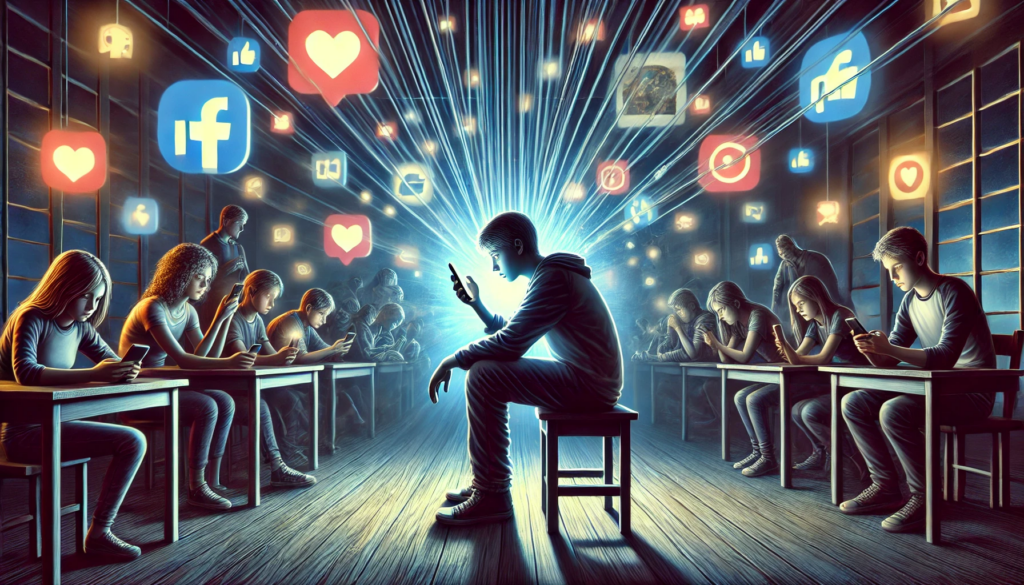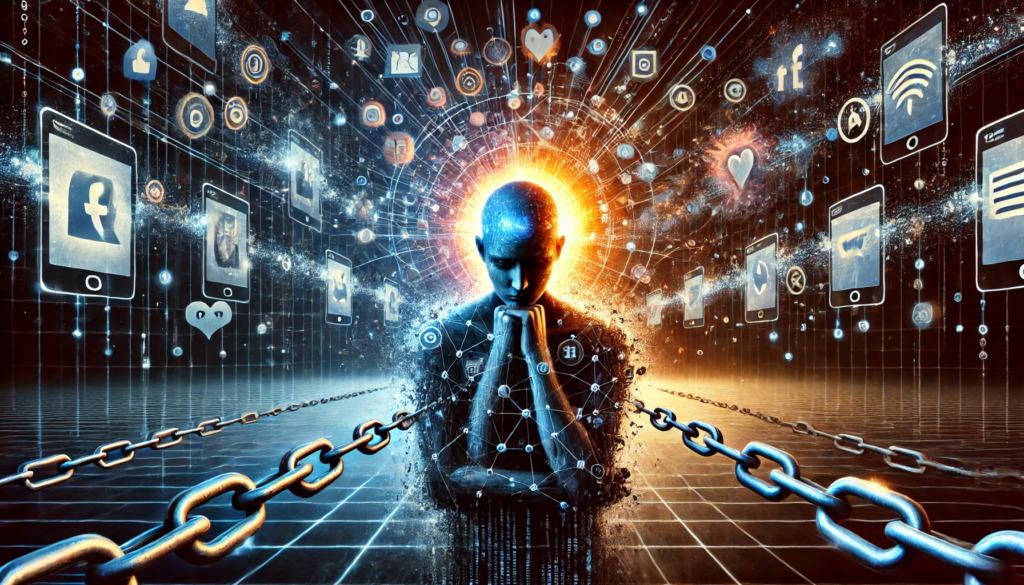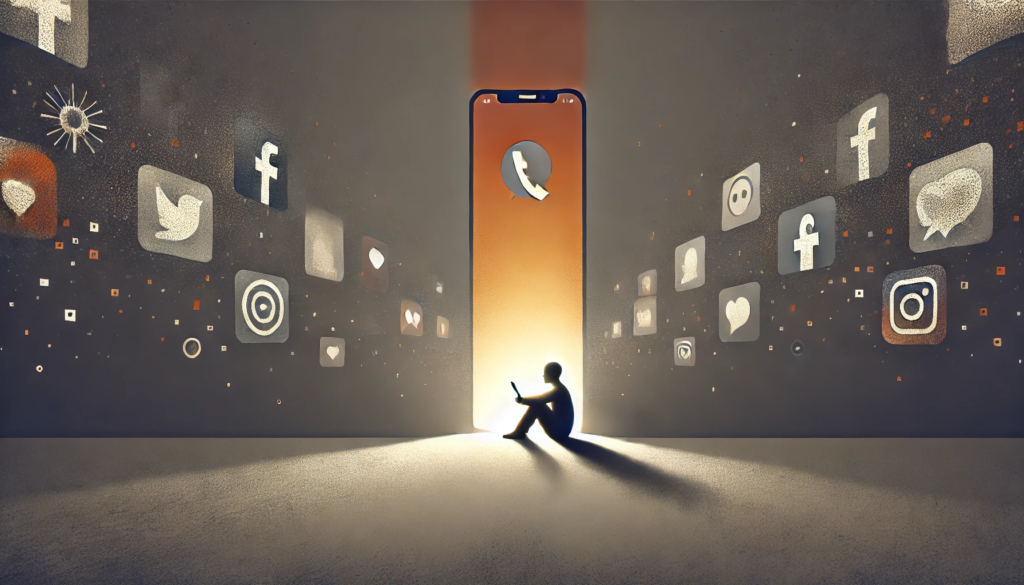
ChatGPT:
How Tech Created a ‘Recipe for Loneliness’ (Detailed Analysis)
This article investigates the intricate relationship between technology and the rising epidemic of loneliness. Through various studies, expert opinions, and actionable insights, it explores how social media, texting, and binge-watching shape social behavior and contribute to feelings of isolation. It also offers practical strategies to navigate and mitigate these effects.
📊 The Loneliness Epidemic: A Harrowing Reality
The Teen Study and Key Findings
A Harvard study led by Laura Marciano shed light on the alarming isolation levels among teens. Over 500 teenagers, surveyed three times daily over several weeks, revealed that over 50% had not spoken to anyone in person or online within the preceding hour. This pattern persisted even during summer break, a time when social engagement typically spikes. The study underscores a paradox: teens are more connected via social media but less socially interactive than ever.
Loneliness Across the U.S.
Loneliness isn’t confined to teenagers. Dr. Vivek Murthy, the U.S. Surgeon General, declared loneliness a public health epidemic, with one in two adults reporting feelings of social isolation. Americans today have fewer close friends and spend significantly more time alone than two decades ago. These trends highlight how profoundly technology has altered interpersonal communication.
📱 Social Media and the Comparison Trap
The Science of Comparison
Social media encourages users to present curated, glamorous snippets of their lives, fostering a culture of judgmental comparisons. People compare their posts’ engagement (likes, comments) or their appearances to influencers, leading to feelings of inadequacy, envy, and fear of missing out (FOMO). For parents, this comparison extends to monitoring their child’s development against others’.
Dr. Chia-chen Yang, an educational psychologist, highlights that while comparisons can be motivational in academic or professional settings, the judgmental nature of online comparisons often induces negative emotions. For instance, a 2018 study she conducted showed that such comparisons made students feel more isolated and distressed.
Tech Companies’ Response
Meta (parent company of Instagram and Facebook) introduced tools to combat these effects, such as hiding like counts and prioritizing content from favorited accounts. However, these measures have seen mixed reactions. While some users found hiding like counts helpful, others felt frustrated by losing an indicator of trends.
Practical Tips
To mitigate the effects of social media comparisons:
• Turn on tools to hide like and share counts.
• Favoritize uplifting accounts to promote positive content.
• Take regular breaks if browsing social media evokes negative feelings.
💬 Text Messaging: A Double-Edged Sword
Overreliance on Texting
Texting has become the primary mode of communication, surpassing richer, more personable methods like phone or video calls. Dr. Marciano’s research suggests this shift creates barriers to authentic connection, especially as texts often lack the nuance of tone and body language. Teens reported feeling anxious when texts were left unanswered, amplifying loneliness.
The Power of Richer Communication
Face-to-face or audio-visual interactions foster a stronger sense of connection. Even a short voice message can convey emotion and authenticity that text messages cannot replicate. Dr. Murthy emphasizes the importance of meaningful interactions, recounting how even the act of making a personal birthday call has declined into abbreviated texts like “HBD.”
🎥 Binge-Watching and Streaming Addiction
How Streaming Fuels Isolation
The pandemic popularized binge-watching, but research shows its harmful psychological impacts. Studies, including a review by Yale professor Dr. Marc Potenza, link binge-watching to increased depression, anxiety, and loneliness. Similar patterns emerge with endless scrolling on TikTok and Instagram Reels. These behaviors are often coping mechanisms for stress, which can deepen isolation rather than alleviate it.
Physical and Mental Health Implications
Extended binge-watching sessions contribute to physical inactivity, sleep deprivation, and procrastination. These behaviors not only harm physical health but can also exacerbate mental health challenges.
Suggested Solutions
To curb binge-watching:
• Turn off autoplay features on platforms like Netflix.
• Use built-in screen-time reminders to manage usage on apps like TikTok and Instagram.
• Temporarily delete apps to break habits when necessary.
🧠 Generative AI: A New Companion for the Lonely
Teens and AI Companions
As technology evolves, new forms of digital companionship are emerging. Teenagers increasingly use generative AI chatbots for emotional support, citing their nonjudgmental nature compared to human interactions. However, experts like Emily Weinstein caution that over-reliance on AI could further distance people from real-world connections.
🚶 Decline of Social Norms in Public Spaces
The Quiet Dining Halls
Dr. Murthy observed a stark change in social behavior during a college tour: dining halls were eerily silent, with students engrossed in their phones. This reflects a broader cultural shift where digital engagement often replaces in-person interaction. Students expressed discomfort with initiating conversations, fearing it would be intrusive.
🌍 Looking Forward: A Moving Target
The Evolution of Tech and Loneliness
The interplay between technology and loneliness is dynamic. Just as we adapt to current challenges, new technologies, platforms, and behaviors emerge. Scholars agree that proactive strategies, self-awareness, and fostering meaningful offline interactions will remain crucial as we navigate this evolving landscape.
🎯 Key Takeaways
1. Teen Loneliness: Over 50% of teens frequently avoid social interaction despite heavy social media use.
2. Comparison Culture: Social media amplifies envy and FOMO, particularly through judgmental comparisons.
3. Texting Overuse: Texting replaces richer communication methods, diminishing emotional connections.
4. Streaming Addiction: Prolonged binge-watching worsens mental and physical health while reinforcing isolation.
5. Social Media Controls: Tools like hidden like counts and account favoriting can reduce comparison-driven stress.
6. AI Companions: Teens view generative AI as empathetic listeners, raising concerns about digital dependency.
7. Cultural Shift: Public spaces, once hubs of interaction, are increasingly quiet due to phone use.
8. Dynamic Challenges: The tech-loneliness relationship will evolve, necessitating constant adaptation.
9. Practical Solutions: Strategies like pausing app use, prioritizing face-to-face connections, and disabling autoplay features help mitigate tech’s effects.
10. Human Connection Matters: Authentic, in-person interactions remain irreplaceable for combating loneliness.
Closing Thoughts
While technology is not the sole cause of loneliness, its role in shaping modern social norms cannot be ignored. By striking a balance between online and offline interactions, embracing tools for healthier tech habits, and fostering meaningful connections, individuals can better navigate this complex landscape.

Q&A
Q1: How does technology contribute to loneliness?
A: Technology contributes to loneliness through mechanisms like social media comparisons, overreliance on text messaging, and addictive behaviors like binge-watching. These habits often replace deeper, more meaningful interpersonal interactions and encourage isolation.
Q2: What did the Harvard study on teenagers reveal?
A: The study found that over 50% of teenagers frequently avoided social interaction, both online and in person, despite heavy use of social media. This highlights a paradox where increased connectivity through technology does not necessarily lead to meaningful social engagement.
Q3: Why are social media comparisons harmful?
A: Social media encourages judgmental comparisons, where people measure their lives against curated, glamorous portrayals of others. This can lead to feelings of inadequacy, envy, and fear of missing out (FOMO), which exacerbate loneliness.
Q4: How does texting differ from face-to-face communication?
A: Texting lacks the emotional nuance and social cues of face-to-face or audio-visual communication. This can lead to misunderstandings and limit the depth of connections, making relationships feel less authentic.
Q5: What are the effects of binge-watching on mental health?
A: Binge-watching is linked to increased anxiety, depression, and loneliness. It also encourages sedentary behavior, sleep deprivation, and procrastination, which can harm both physical and mental health.
Q6: What tools are available to reduce social media’s negative impact?
A: Platforms like Instagram offer features to hide like counts, favorite positive accounts, and set screen-time limits. These tools help users manage comparison-driven stress and control their usage habits.
Q7: How can someone reduce loneliness caused by technology?
A: Strategies include taking breaks from social media, engaging in face-to-face or video communication, turning off autoplay features for streaming, and prioritizing offline activities that foster real-world connections.
Q8: What role does generative AI play in loneliness?
A: Generative AI chatbots are becoming emotional outlets for some, especially teenagers, due to their perceived nonjudgmental nature. However, reliance on AI for companionship may further isolate individuals from human connections.
Q9: What did Dr. Murthy observe about public spaces like dining halls?
A: Dr. Murthy noted that dining halls have become quiet as students focus on their phones instead of engaging in conversation, reflecting a cultural shift in how people interact in public spaces.
Q10: Is loneliness caused solely by technology?
A: No, loneliness is a multifaceted issue influenced by various factors. While technology plays a significant role, individual habits, social norms, and mental health conditions also contribute.

To address the issue of loneliness exacerbated by technology use, a multifaceted approach involving individuals, families, educational institutions, and technology companies is necessary. Here are some methods to help mitigate the phenomenon:
1. Promote Digital Well-being Education
• In Schools and Colleges: Integrate digital literacy programs that educate students about the psychological impacts of technology use, including social comparisons and screen time management.
• Parental Guidance: Parents can have open conversations with their children about healthy tech habits and set examples by practicing mindful usage themselves.
2. Encourage Authentic Social Interactions
• Face-to-Face Meetings: Prioritize in-person gatherings with friends and family to strengthen real-life connections.
• Use Rich Communication Methods: Opt for phone calls or video chats over text messages to convey emotions and nuances better.
• Community Engagement: Participate in local events, clubs, or volunteer opportunities to build a sense of belonging.
3. Mindful Social Media Usage
• Limit Harmful Comparisons: Be aware of the tendency to compare oneself with others online and take breaks from platforms that trigger negative feelings.
• Curate Your Feed: Follow accounts that promote positivity and unfollow or mute those that lead to envy or dissatisfaction.
• Disable Like Counts: Use platform settings to hide likes and shares to reduce the emphasis on popularity metrics.
4. Set Healthy Boundaries with Technology
• Screen Time Management: Use apps or built-in device features to monitor and limit time spent on social media and streaming services.
• Scheduled Downtime: Establish tech-free periods during the day, especially before bedtime, to engage in other activities like reading or exercise.
• Avoid Multitasking with Devices: Focus on one task at a time to enhance productivity and reduce the feeling of being overwhelmed.
5. Encourage Alternative Activities
• Hobbies and Interests: Pursue activities that don’t involve screens, such as sports, arts, or outdoor adventures.
• Group Activities: Join clubs or groups that align with personal interests to meet like-minded individuals.
6. Foster Open Communication
• Express Feelings: Share experiences of loneliness or anxiety with trusted friends, family members, or mental health professionals.
• Active Listening: Practice being present and attentive during conversations to deepen relationships.
7. Advocate for Positive Tech Design
• Feedback to Tech Companies: Support platforms that prioritize user well-being and provide feedback to those that don’t.
• Use Well-Designed Apps: Choose apps that encourage meaningful interactions over passive consumption.
8. Address Societal Norms
• Cultural Shift: Encourage a culture where saying hello or engaging in small talk is welcomed rather than seen as intrusive.
• Awareness Campaigns: Support public health initiatives that highlight the importance of social connection and the risks of isolation.
9. Mental Health Support
• Professional Help: Seek counseling or therapy if feelings of loneliness persist or worsen.
• Support Groups: Join groups where individuals share experiences and coping strategies.
10. Leverage Technology Positively
• Use Apps for Good: Engage with platforms designed to facilitate real-world meetups or community service.
• Educational Content: Consume content that promotes self-improvement and mental well-being.
Conclusion
Addressing loneliness in the age of technology requires intentional actions to foster genuine connections and mindful usage of digital tools. By implementing these methods, individuals can enhance their social well-being while still benefiting from the positive aspects of technology.
